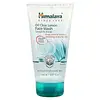What's inside
What's inside
 Key Ingredients
Key Ingredients

 Benefits
Benefits

 Concerns
Concerns

 Ingredients Side-by-side
Ingredients Side-by-side

Water
Skin ConditioningAmmonium Lauryl Sulfate
CleansingCitrus Limon Fruit Extract
MaskingCocamidopropyl Betaine
CleansingSodium Cocoyl Glutamate
CleansingDisodium Cocoyl Glutamate
CleansingGlycerin
HumectantHoney
HumectantAcrylates/C10-30 Alkyl Acrylate Crosspolymer
Emulsion StabilisingParfum
MaskingPhenoxyethanol
PreservativeSodium Hydroxide
BufferingHydrogenated Jojoba Oil
AbrasiveCitric Acid
BufferingSodium Metabisulfite
AntioxidantMethylchloroisothiazolinone
PreservativeDisodium EDTA
Water, Ammonium Lauryl Sulfate, Citrus Limon Fruit Extract, Cocamidopropyl Betaine, Sodium Cocoyl Glutamate, Disodium Cocoyl Glutamate, Glycerin, Honey, Acrylates/C10-30 Alkyl Acrylate Crosspolymer, Parfum, Phenoxyethanol, Sodium Hydroxide, Hydrogenated Jojoba Oil, Citric Acid, Sodium Metabisulfite, Methylchloroisothiazolinone, Disodium EDTA
Water
Skin ConditioningGlycerin
HumectantCaprylic/Capric Triglyceride
MaskingBehenyl Alcohol
EmollientHelianthus Annuus Seed Oil
EmollientPhenoxyethanol
PreservativeAminomethyl Propanol
BufferingSodium Methyl Cocoyl Taurate
CleansingCocamidopropyl Betaine
CleansingAcrylates/C10-30 Alkyl Acrylate Crosspolymer
Emulsion StabilisingRosa Canina Fruit Oil
EmollientDisodium Cocoyl Glutamate
CleansingCaprylyl Glycol
EmollientSucrose Distearate
EmollientSucrose Stearate
EmollientXanthan Gum
EmulsifyingChlorphenesin
AntimicrobialLavandula Angustifolia Oil
MaskingSodium Cocoyl Glutamate
CleansingTocopherol
AntioxidantYucca Schidigera Leaf/Root/Stem Extract
CleansingGlycine Soja Oil
EmollientAloe Barbadensis Leaf Juice
Skin ConditioningWater, Glycerin, Caprylic/Capric Triglyceride, Behenyl Alcohol, Helianthus Annuus Seed Oil, Phenoxyethanol, Aminomethyl Propanol, Sodium Methyl Cocoyl Taurate, Cocamidopropyl Betaine, Acrylates/C10-30 Alkyl Acrylate Crosspolymer, Rosa Canina Fruit Oil, Disodium Cocoyl Glutamate, Caprylyl Glycol, Sucrose Distearate, Sucrose Stearate, Xanthan Gum, Chlorphenesin, Lavandula Angustifolia Oil, Sodium Cocoyl Glutamate, Tocopherol, Yucca Schidigera Leaf/Root/Stem Extract, Glycine Soja Oil, Aloe Barbadensis Leaf Juice
 Reviews
Reviews

Ingredients Explained
These ingredients are found in both products.
Ingredients higher up in an ingredient list are typically present in a larger amount.
Acrylates/C10-30 Alkyl Acrylate Crosspolymer is a synthetic polymer. It is used to thicken and improve the texture of products. Due to its properties, it can prevent water and oil ingredients from separating.
Cocamidopropyl Betaine is a fatty acid created by mixing similar compounds in coconut oil and dimethylaminopropylamine, a compound with two amino groups.
This ingredient is a surfactant and cleanser. It helps gather the dirt, pollutants, and other impurities in your skin to be washed away. It also helps thicken a product and make the texture more creamy.
Being created from coconut oil means Cocamidopropyl Betaine is hydrating for the skin.
While Cocamidopropyl Betaine was believed to be an allergen, a study from 2012 disproved this. It found two compounds in unpure Cocamidopropyl Betaine to be the irritants: aminoamide and 3-dimethylaminopropylamine. High-grade and pure Cocamidopropyl Betaine did not induce allergic reactions during this study.
Learn more about Cocamidopropyl BetaineWe don't have a description for Disodium Cocoyl Glutamate yet.
Glycerin is already naturally found in your skin. It helps moisturize and protect your skin.
A study from 2016 found glycerin to be more effective as a humectant than AHAs and hyaluronic acid.
As a humectant, it helps the skin stay hydrated by pulling moisture to your skin. The low molecular weight of glycerin allows it to pull moisture into the deeper layers of your skin.
Hydrated skin improves your skin barrier; Your skin barrier helps protect against irritants and bacteria.
Glycerin has also been found to have antimicrobial and antiviral properties. Due to these properties, glycerin is often used in wound and burn treatments.
In cosmetics, glycerin is usually derived from plants such as soybean or palm. However, it can also be sourced from animals, such as tallow or animal fat.
This ingredient is organic, colorless, odorless, and non-toxic.
Glycerin is the name for this ingredient in American English. British English uses Glycerol/Glycerine.
Learn more about GlycerinPhenoxyethanol is a preservative that has germicide, antimicrobial, and aromatic properties. Studies show that phenoxyethanol can prevent microbial growth. By itself, it has a scent that is similar to that of a rose.
It's often used in formulations along with Caprylyl Glycol to preserve the shelf life of products.
Sodium Cocoyl Glutamate is a gentle cleanser and surfactant. It is the sodium salt of the Cocoyl Glutamic Acid and comes from coconut oil. As a surfactant, it helps lift dirt and oil to be washed away.
Sodium Cocoyl Glutamate also has an emolliating effect and can help leave the skin feeling soft.
Water. It's the most common cosmetic ingredient of all. You'll usually see it at the top of ingredient lists, meaning that it makes up the largest part of the product.
So why is it so popular? Water most often acts as a solvent - this means that it helps dissolve other ingredients into the formulation.
You'll also recognize water as that liquid we all need to stay alive. If you see this, drink a glass of water. Stay hydrated!
Learn more about Water